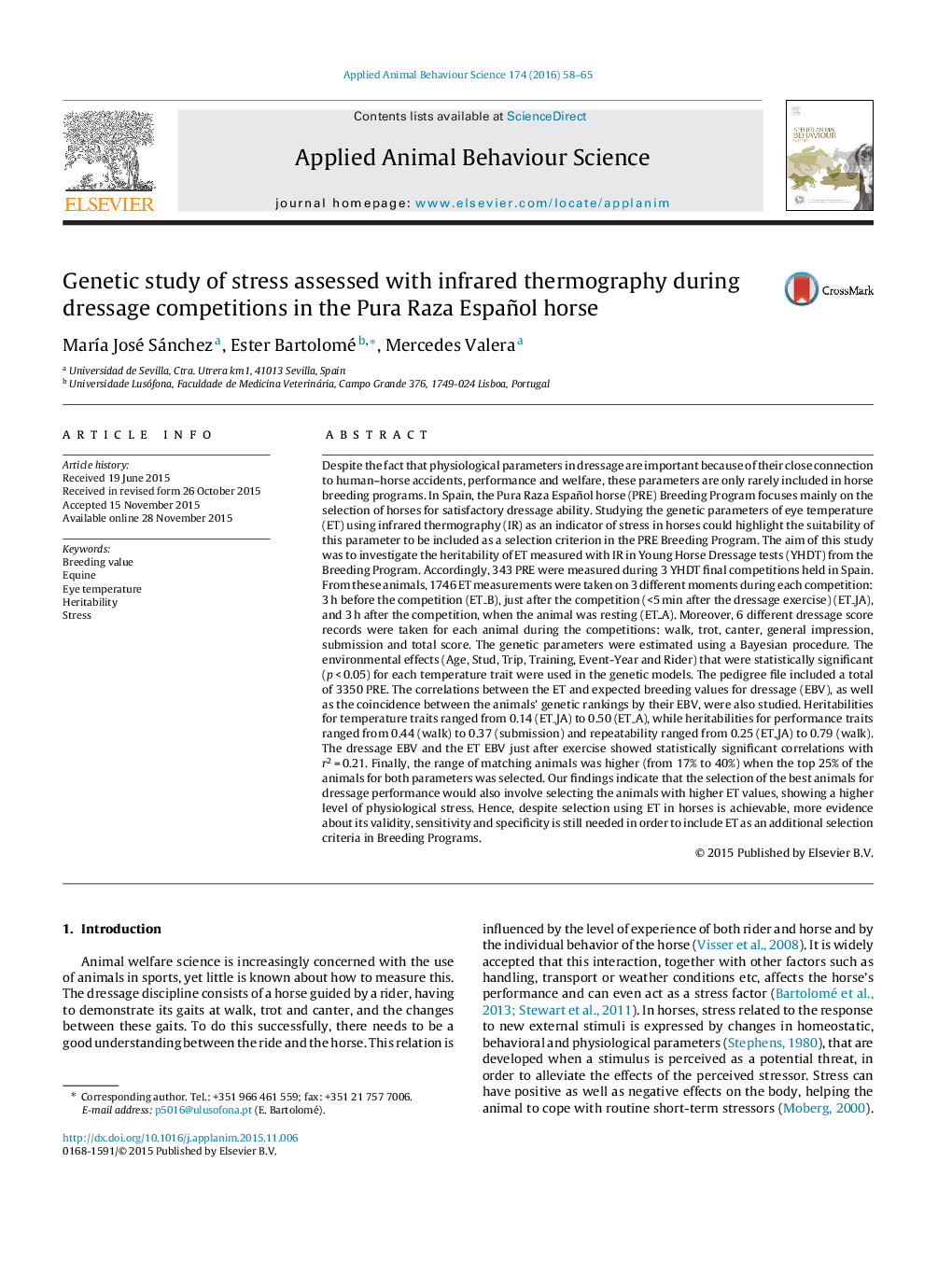| کد مقاله | کد نشریه | سال انتشار | مقاله انگلیسی | نسخه تمام متن |
|---|---|---|---|---|
| 6379351 | 1625332 | 2016 | 8 صفحه PDF | دانلود رایگان |

- A selection made to improve ET values would improve Dressage performance.
- ET appears to be measuring physiological stress rather than emotional stress.
- ET is suitable for assessing stress, despite being influenced by many environmental factors.
- This is the first study to determine the heritability of stress assessed with ET.
- h2 0.14-0.50 supported the assumption that horses inherit susceptibility to stress.
Despite the fact that physiological parameters in dressage are important because of their close connection to human-horse accidents, performance and welfare, these parameters are only rarely included in horse breeding programs. In Spain, the Pura Raza Español horse (PRE) Breeding Program focuses mainly on the selection of horses for satisfactory dressage ability. Studying the genetic parameters of eye temperature (ET) using infrared thermography (IR) as an indicator of stress in horses could highlight the suitability of this parameter to be included as a selection criterion in the PRE Breeding Program. The aim of this study was to investigate the heritability of ET measured with IR in Young Horse Dressage tests (YHDT) from the Breeding Program. Accordingly, 343 PRE were measured during 3 YHDT final competitions held in Spain. From these animals, 1746 ET measurements were taken on 3 different moments during each competition: 3 h before the competition (ET_B), just after the competition (<5 min after the dressage exercise) (ET_JA), and 3 h after the competition, when the animal was resting (ET_A). Moreover, 6 different dressage score records were taken for each animal during the competitions: walk, trot, canter, general impression, submission and total score. The genetic parameters were estimated using a Bayesian procedure. The environmental effects (Age, Stud, Trip, Training, Event-Year and Rider) that were statistically significant (p < 0.05) for each temperature trait were used in the genetic models. The pedigree file included a total of 3350 PRE. The correlations between the ET and expected breeding values for dressage (EBV), as well as the coincidence between the animals' genetic rankings by their EBV, were also studied. Heritabilities for temperature traits ranged from 0.14 (ET_JA) to 0.50 (ET_A), while heritabilities for performance traits ranged from 0.44 (walk) to 0.37 (submission) and repeatability ranged from 0.25 (ET_JA) to 0.79 (walk). The dressage EBV and the ET EBV just after exercise showed statistically significant correlations with r2 = 0.21. Finally, the range of matching animals was higher (from 17% to 40%) when the top 25% of the animals for both parameters was selected. Our findings indicate that the selection of the best animals for dressage performance would also involve selecting the animals with higher ET values, showing a higher level of physiological stress. Hence, despite selection using ET in horses is achievable, more evidence about its validity, sensitivity and specificity is still needed in order to include ET as an additional selection criteria in Breeding Programs.
Journal: Applied Animal Behaviour Science - Volume 174, January 2016, Pages 58-65